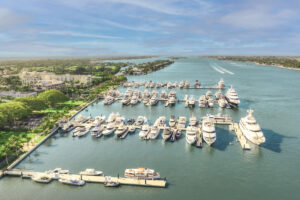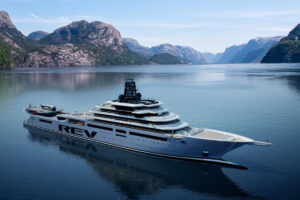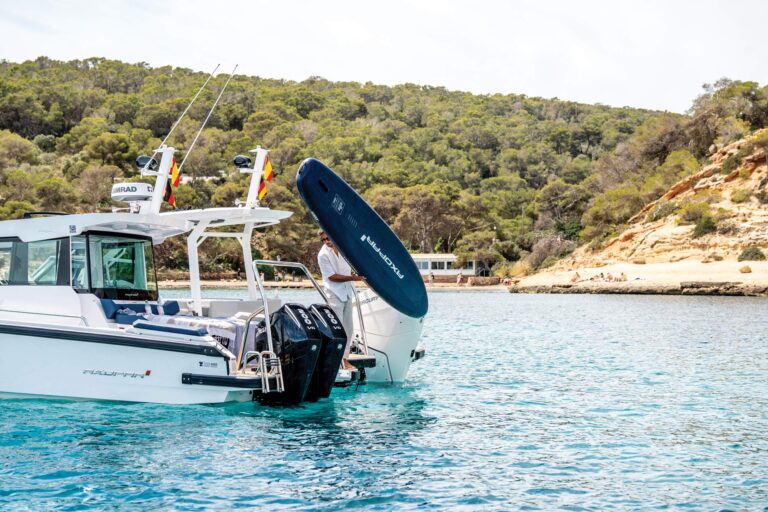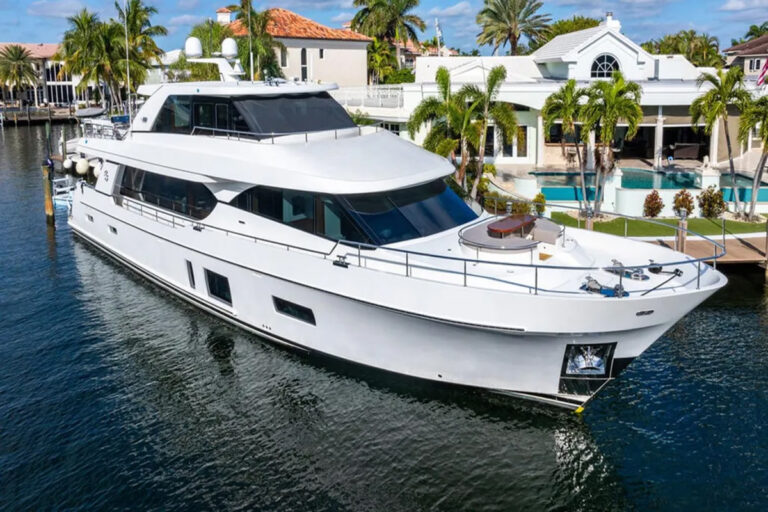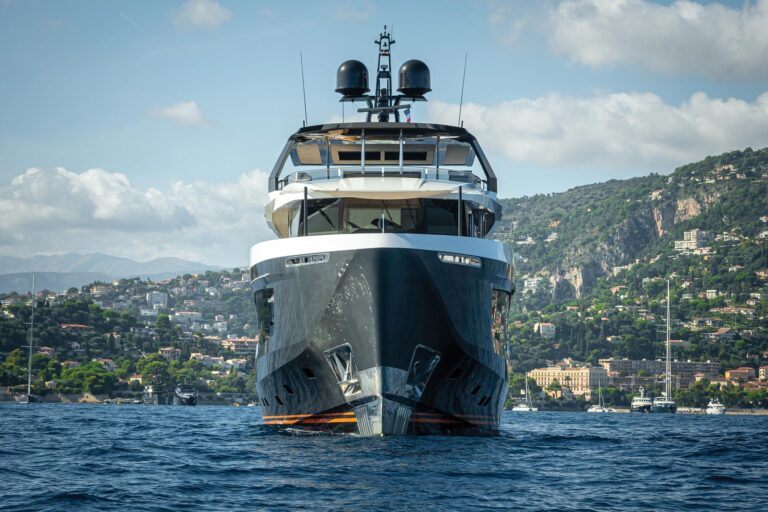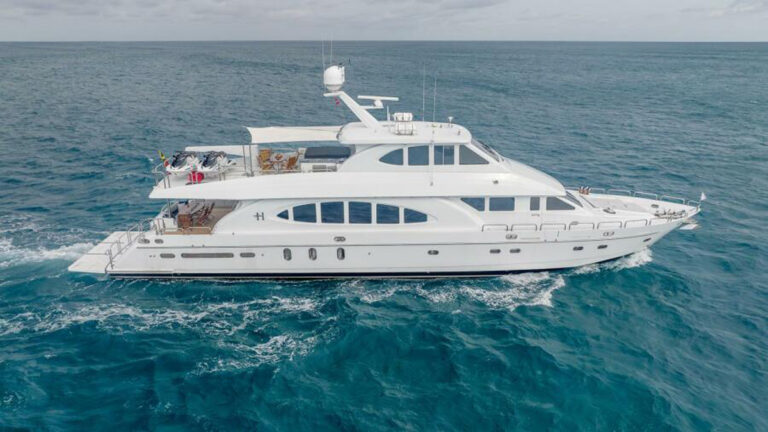
Chesapeake
In the September issue, I reviewed some of my favorite destinations on the western and eastern shores of the northern Chesapeake Bay, including a few hidden gems that my family and I have discovered during a lifetime of cruising the area. Now it’s time to point our bow south (plus see the complete photo gallery here).
If you are in the mood for city life and virtually unlimited cultural offerings, head south along the bay’s western shore and run up the Potomac River to Washington, D.C. Give yourself some time for this trip, however, because Washington is 100 miles upriver. Surprisingly, there isn’t much development along the Potomac’s shores until you reach Old Town Alexandria in Virginia, which is a splendid place to stop and explore. A slip at the Alexandria City Marina puts you in the center of it all, with more than a hundred restaurants, fine shops and museums. You can also take the Metro train to downtown Washington.
Continue up the Potomac River by boat for another three miles to Washington Channel and get a slip at the Capital Yacht Club or Gangplank Marina. You can anchor in the Washington Channel, but be prepared to answer all kinds of questions from the Metro Marine Police, which controls the area. You can pay to land your dinghy at one of the marinas.
From here, you’ll have a breathtaking view of the Washington Monument, and you’ll be within walking distance or a short taxi ride to the National Mall, the Smithsonian, the American Museum of Natural History, the National Gallery of Art and many more national treasures. If you visit Washington by boat in the fall, you’ll be rewarded with short lines at the museums and relief from the city’s notoriously hot, humid summer weather.

The diversity of the bay’s attractions never fails to intrigue me, and there’s no greater diversity than in Washington, D.C., and the bay’s lower eastern shore. A fall cruise to Crisfield and Smith Island in Maryland will take you back in time to when life on the bay centered around the harvesting and packaging of its natural resources — mainly oysters and blue crabs. Crisfield was once the second most populous city in Maryland and was known as the “Seafood Capital of the World.” However, the decline of the bay’s health devastated the region, and today Crisfield is struggling to reinvent itself as a tourist attraction. A key ingredient to attracting boaters is the renovated Somers Cove Marina, with more than 500 slips — 100 of them for transients up to 150 feet in length. After Oct. 1 dockage rates are heavily discounted. While one would expect to find a decent seafood restaurant or two in this waterman’s town, I was unprepared for the exquisite cuisine I experienced recently at the Watermen’s Inn just a short walk from the marina. The menu selection, quality of food, dining atmosphere and superb service are reasons alone to visit Crisfield.
Accessible only by boat and seven miles to the west of Crisfield across Tangier Sound is Smith Island, a window into the bay’s treasured past. Fighting a battle of erosion and disappearing wetlands, the 300 or so inhabitants continue to make a living from harvesting crabs and, to a lesser extent, welcoming adventurous tourists. Transient dock space and overnight accommodations are limited, so one of the best ways to visit is to take a day excursion boat from Crisfield. Enjoy a walk along the quaint, narrow streets and you’ll see far more crab pots than people. While you’re on the island, try a slice of the famous Smith Island Cake, featuring a dozen thin layers of cream and crushed candy bars. It was recently designated the official dessert of Maryland.
Most waterfront towns along the bay offer all kinds of maritime services, but one town stands out as especially boatcentric— Deltaville, Virginia, straddling the Rappahannock and Piankatank rivers on the lower western shore. With fewer than 1,000 residents, but more than 3,000 boats and nearly a dozen boatyards and marinas, Deltaville is a popular destination for winter storage and top-notch service work. Fall oyster roasts, art and seafood festivals, Halloween parties, farmers’ markets and Christmas cruises are reasons to visit after the summer rush.|

Deltaville
At some point during the fall one must decide whether to winter on the bay or head to the Intracoastal Waterway (ICW) in Norfolk for the 1,000-mile journey south. Even if you’re not traveling down the ICW, a cruise to the Norfolk and Portsmouth area has many rewards. Get a slip at Waterside Marina on the Norfolk side of the Elizabeth River and visit Nauticus, one of the most fascinating and educational museums in the country. Besides the fun exhibits and activities in the museum itself, you can tour the battleship USS Wisconsin, berthed next door.
Across the river is Portsmouth, which is enjoying a revival of its waterfront. Tidewater Yacht Marina and Ocean Marine Yacht Center are good places to stay, because they are within walking distance of Portsmouth’s restaurants, shops and museums. A ferry runs between Portsmouth and Waterside Park, so even if you stay on the west side of the river, you can easily visit Nauticus.
Norfolk/Portsmouth is mile zero of the Atlantic Intracoastal Waterway and 1,000 miles from the warm, sunny beaches of Florida. From here you can take the Virginia Cut or Dismal Swamp routes south. But before you head south for the winter, plan to spend the fall season exploring the magnificent Chesapeake Bay. The scenery is spectacular, wildlife is everywhere, and when you tire of secluded, empty anchorages, get a slip in a downtown marina and take advantage of what the bay’s exciting waterfront cities have to offer.

